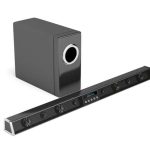The role of voice assistants in modern audio systems is transforming how we experience music, podcasts, audiobooks, etc at home. Devices like the Amazon Echo and Google Home are bringing conversational AI into our living rooms and bedrooms via simple voice commands. Rather than fumbling with buttons and remotes, you can now just say requests aloud to queue up playlists, set timers, or control your smart homes without breaking focus on what matters. These intelligent AI helpers are making our entertainment seamlessly accessible. In this article, we’ll explore the myriad ways voice technology is reinventing modern audio plus what the future may hold.
Streamlined Access and Control
A major benefit of voice assistants is providing quick, hands-free access to audio content. Instead of having to grab your phone when your hands are messy cooking or full of laundry, you can just say “Hey Google, play my upbeat playlist” to start the music. No matter what you’re focused on, from making breakfast to playing with the kids, voice commands let you easily cue up tunes without disrupting your flow. Just speak out loud to effortlessly control the soundtrack to life’s everyday moments.
For instance, if you have dough on your hands in the kitchen, you can call out “Alexa, play jazz for cooking” without stopping to tap buttons on your phone. This convenience is clutch. Parents also love being able to ask for lullabies or white noise for naps without interrupting story time or cuddle time. The hands-free, eyes-free access makes juggling life’s little tasks simpler.
Voice control also helps with navigation once the audio is playing. You can easily pause, skip tracks, adjust the volume, or stop playback completely through voice commands. No longer do you need to memorize which button on the speaker or remote adjusts the volume. Just say “Hey Google, turn it up” and the assistant handles it for you. This added convenience enables seamless listening experiences.
Expanded Content Discovery
In addition to streamlining control, voice assistants open up new pathways for discovering audio content. AI assistants can deliver personalized recommendations based on your listening history, favorite genres, mood, activities, etc. Just ask for a certain type of music, podcast, or playlist and the assistant will serve up relevant suggestions.
For example, if you say “Alexa, play something funky,” it could pull up a custom playlist of funk hits and new songs based on the fact that you previously listened to similar artists. This allows you to find new audio material that fits your tastes without having to spend time browsing apps or searching manually.
You can also request playlists for specific themes or activities. For instance, you could say “Siri, play upbeat pop music for cooking” or “Alexa, play relaxing jazz for reading.” The assistant then curates a fitting mix based on cues like the tempo you want or the focus required for reading. This makes it easy to find the perfect audio backdrop for any occasion or setting without having to think too hard about what music suits it.
Whole-Home Audio Integration
Another key advantage of voice assistants is how they enable whole-home audio integration. Multi-room smart speakers let you access the same audio from different parts of your house. You can group speakers to play the same music in multiple rooms in sync or play different music in each room, all using simple voice commands.
For example, you could say “Alexa, group the living room speaker and the kitchen speaker” to have the same songs play in two rooms at once – perfect for moving around the first floor while hosting a get-together. No longer do you need to manage independent audio devices in each space – everything is seamlessly connected.
This whole-home integration also enables transitional listening experiences as you move through your house. For instance, you can start streaming a podcast in the kitchen, then tell your assistant to “transfer the podcast to the living room speaker” when you walk into the next room. The podcast picks up in the new room right where you left off, thanks to cloud syncing. This provides greater continuity than having to manually re-queue audio on different devices.
Personalized, Contextual Experiences
In addition to universal commands for any user, voice assistants also enable more personalized audio experiences through voice recognition and contextual awareness. Devices like Amazon Echo and Google Nest can distinguish individual voices and learn different users’ preferences.
For example, by recognizing your voice, your assistant could learn that you like to listen to audiobooks in the morning but your spouse prefers an upbeat playlist to start their day. Personalized results are tailored to each family member’s tastes.
Assistants also tap into contextual signals to deliver more intelligent audio recommendations and control. For instance, they may lower the music volume when you say you’re expecting a call, or automatically start an audiobook when your connected fitness tracker shows you’re on a run. By adapting to usage contexts, assistants create more seamless audio interactions.
Smart Home Integration
Smart speakers go beyond audio playback. With their intelligent assistance capabilities, they can also serve as control hubs for your broader connected home. You can use voice commands to adjust smart lights, change the temperature through a smart thermostat, unlock smart locks, monitor home security cameras, etc. This reduces the need for multiple apps plus controls.
For example, you could say “Alexa, dim the living room lights” or “Hey Google, set the temperature to 68 degrees.” The assistant then communicates with those devices so you don’t have to. You can even create routines where your assistant launches a set of smart home actions with a single voice command. For instance, saying “Alexa, goodnight” could turn off the lights, lock the doors, lower the thermostat temperature, start white noise audio, and more, making bedtime simpler. Deep smart home integration expands the utility of voice-enabled audio devices.
Challenges and Concerns
While voice assistants provide many benefits for audio experiences, there are also some challenges and concerns to consider:
- Privacy: Some consumers worry about privacy given that assistants are always listening for their activation words. Companies address this by only recording and transmitting audio after the activation phrase is detected. Still, some apprehension remains about this kind of always-on technology.
- Connectivity requirements: Voice assistants rely on persistent internet connectivity and complex cloud processing. Without a solid connection, their functionality is limited. This can be problematic in areas with poor broadband access where streaming audio cuts out frequently.
- Audio quality limitations: Smart speakers often can’t match the audio quality of high-end, dedicated stereo systems. There are some exceptions, but compression applied during streaming and small integrated speakers lead to compromised quality for some audiophile use cases.
- Technology limitations: While AI assistants have come a long way, they still struggle with more complex or nuanced requests. Advancements in natural language processing are needed to handle more robust conversations beyond basic commands.
Overall though, the benefits voice assistants bring to accessibility, discovery, connectivity, and contextualization outweigh these drawbacks for most mainstream users. Intelligent audio is critical to the value proposition of devices like smart speakers for the average consumer.
The Future of Voice and Audio
Voice-controlled intelligent assistants are still in their early days. While adoption is rising, there remains huge potential for further development plus new use cases. As technology advances, we can expect voice assistants to play an even greater role in shaping future audio systems and experiences.
Here are some possible areas of expansion:
- Truly conversational interfaces – More natural language understanding could enable engaging back-and-forth conversations between users and assistants beyond simple commands and responses. Imagine having a dialogue about music preferences and getting thoughtful recommendations rather than just reciting commands.
- Expanded roles in smart homes/cars – Assistants will likely manage even more aspects of connected environments including entertainment, work, health, etc. For example, your car’s voice assistant may seamlessly pick up where you left off in a podcast as soon as you enter the vehicle.
- Personalization and customization – More tailored features, recommendations, and interactions based on individual user data and behaviors. Assistants may respond differently to each family member and even adjust their tone of voice or speaking style to fit users’ preferences.
- Audio quality improvements – Advances in streaming, compression, and speaker hardware will bring better audio fidelity to smart devices. We may see the gap close between voice assistant speakers and audiophile systems.
- Expanded hands-free control – As assistants understand more subtle cues like gestures and glances, users will be able to control devices in even more hands-free ways. An assistant may notice you gesturing to turn up the volume and respond accordingly.
- Predictive, proactive experiences – Assistants could anticipate user needs and take actions on their behalf based on intelligence and user understanding. For instance, it may notice you cook every Sunday night and proactively ask if you want to play your cooking playlist.
Summary
In summary, the role of voice assistants in modern audio systems is profound. Intelligent assistants like Alexa, Siri, and Google Assistant are driving increased adoption of smart speakers and other voice-first devices. They are making audio experiences more accessible, personalized, and interconnected through hands-free voice control. While there are some limitations and concerns, voice assistants provide simplified discovery and management of music, news, podcasts, audiobooks, etc for the average listener.
As the supporting technologies continue to evolve, voice-enabled assistants will shape audio innovation for years to come. You can expect more advanced conversational interfaces, expanded smart environment integration, highly personalized recommendations, and enhanced audio quality down the road.
The next generation of seamless, contextual audio experiences has already begun with the rise of voice assistants. Companies like Amazon, Google, Apple, etc are heavily investing in this space, showing that voice is likely to be a critical part of our auditory future. While the technology is still maturing, the potential is game-changing.
Intelligent voice assistants are bringing convenience, accessibility, and enjoyment to millions of people’s audio experiences in the home and beyond. As they continue to rapidly progress, they will redefine how you discover, manage, or interact with the audio content you love. Voice is quickly becoming the new remote control for modern audio systems and that trend shows no signs of fading.
Michael Evanchuk is a San Francisco-based sound engineer with 20 years’ experience installing, troubleshooting, and repairing commercial, automotive, and household sound equipment. Evanchuk owns an auto stereo center, where he offers highly competitive car audio installation and repair services. He has written dozens of articles on different sound engineering topics, all of which have been published in leading journals, blogs, and websites.





